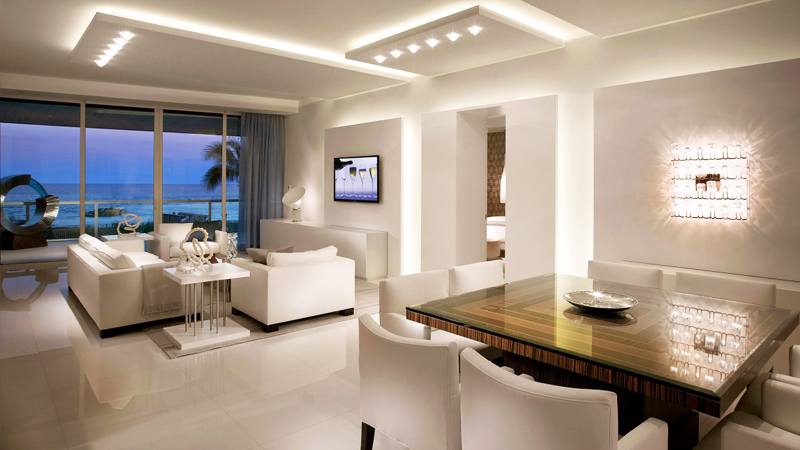Residential Lighting Design Tips
Interior lighting is one of the fundamental issues of residential design. The atmosphere of a residence can vary depending on natural light and various types of artificial lighting and where/how they are used. A good lighting design makes the spaces we live in comfortable and functional while at the same time creating environments where the architectural details look perfect and delight its residents and visitors.

Interior lighting is one of the fundamental issues of residential design. The atmosphere of a residence can vary depending on natural light and various types of artificial lighting and where/how they are used. A good lighting design makes the spaces we live in comfortable and functional while at the same time creating environments where the architectural details look perfect and delight its residents and visitors.
The quantity and quality of lighting are primary factors in successful lighting design. A designer must consider several features developing a lighting plan, including light source type, system efficiency, lumen outputs, maintenance, color rendering, daylight integration and control, light distribution, functions, costs, system control, and flexibility.
Aims of the designer in residential lighting design;
- Creating a warm and inviting living space
- Providing safe and functional environments
- Enhancing the character of the space
- Developing lighting plans according to the various functions and interests
- Combining task, ambient, decorative, and accent lighting
- Designing a flexible and easy-to-maintain lighting system
- Taking into account energy saving
Features of residential space to consider during the lighting design process;
- Dimensions and shape of the space
- Used materials
- Function
- Age of the persons living in
- Colors and reflectance of the walls, surfaces, furniture
- Artworks
- Wishes and life styles of the users
The first step of lighting in residential areas is to benefit from natural light in all the rooms.
Why is natural lighting needed?
Natural lighting,
- Increases concentration and focus
- Saves energy and money
- Reduces blood pressure
- Decreases stress and anxiety
- Can boost the immune system
- Increases happiness
- Helps prevent sadly
- Is a vital source of vitamin D
- Gives energy
- Helps better sleep
- Is better for indoor plants
How to maximize natural light in space?
The role of the architect in this complicated matter is primary and very crucial.
While designing the house, attention should be paid to the size and location of windows and similar openings, glass selection, and the direction and intensity of daylight during the day and maximum benefit should be achieved.
Decoration tips to get more natural light;
- Using lighter colors on the walls and floor, shiny surfaces in the kitchen and bathroom which will reflect the natural light than absorbing it,
- Preventing furniture from blocking sunlight
- Using carefully mirrors to reflect natural lighting
- Keeping windows clean
- Using glass doors or doors with windows to let the natural light pass one room to another
In addition to the natural light we use artificial lighting for the following main lighting layers;
- Ambient lighting, uniform, base-level lighting especially for orientation and general tasks
- Task lighting, illumination of an area for a specific task, providing a localized and higher lighting level
- Accent lighting, to create dramatic effects on textures, shapes, and colors with contrasts and shadows
- Decorative lighting, to enhance the look of a space as a design element and also to support general lighting
The designer should take some decisions for each different room, depending on the function and atmosphere, in order to achieve the intended environment. These are,
- Lighting levels
- Light source features, lumen output, CCT, CRI
- Beam angles, light distribution types
- Fixture types, recessed, surface mounted, track system, pendant, wall sconce, portable lamps, etc.
- Lighting control system schema
- Emergency lighting plan
Houses are private personal spaces of people. Especially in residential lighting it is not possible to apply standard lighting solutions that can suit everyone. Therefore, the lighting designer must be in contact with the architects and users of the house throughout the design process.
Sources:
https://www.housebeautiful.com/
https://artilux.com.au/
https://www.universal-lighting.co.uk/
https://www.deltalight.com





